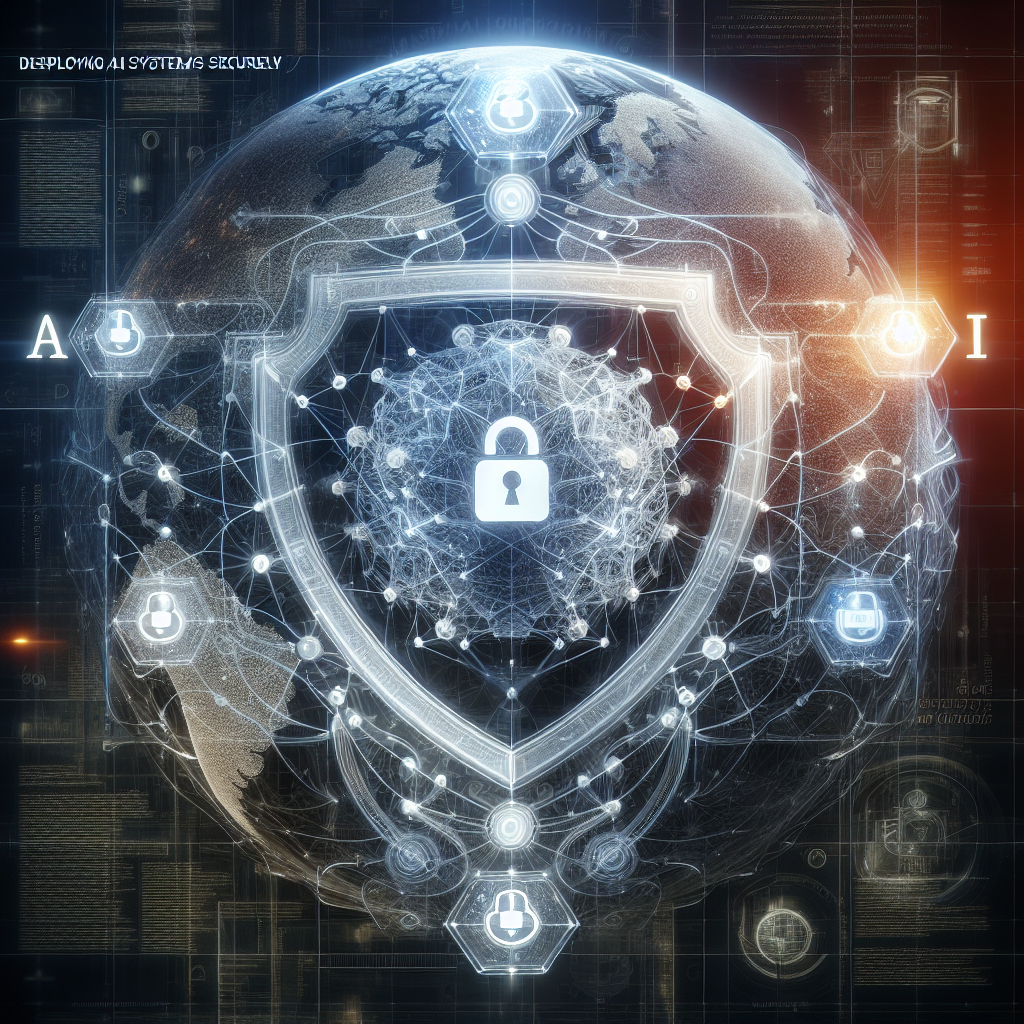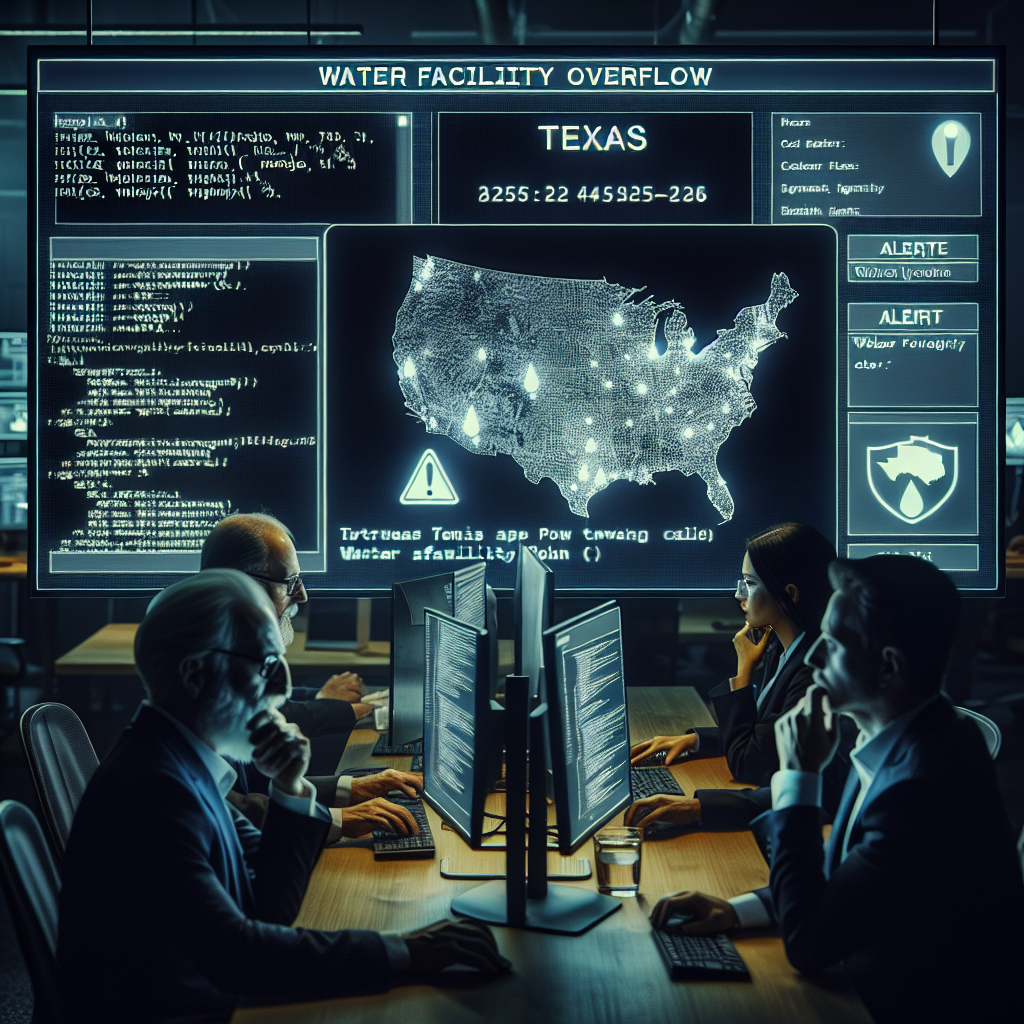Unlocking the Power of AI Safely: NSA’s Essential Guide to Securely Deploying AI Systems
The National Security Agency (NSA) has recently released a new cybersecurity information sheet that provides guidelines for deploying artificial intelligence (AI) systems securely. In an era where AI is becoming increasingly prevalent in various sectors, ensuring the security of these systems is of utmost importance. The NSA’s information sheet aims to address the potential risks and vulnerabilities associated with AI deployment and offers practical recommendations to mitigate them.
In this article, we will delve into the key insights provided by the NSA’s cybersecurity information sheet on deploying AI systems securely. We will explore the unique challenges and threats posed by AI systems, such as adversarial attacks and data poisoning, and how organizations can effectively protect themselves against these risks. Additionally, we will discuss the recommended best practices outlined by the NSA, including secure development and deployment, continuous monitoring, and personnel training. By examining the NSA’s guidelines, we can gain valuable insights into the evolving landscape of AI security and the measures organizations should take to safeguard their AI systems.
Key Takeaways:
1. The NSA has released a comprehensive cybersecurity information sheet providing guidance on deploying AI systems securely.
2. The document emphasizes the importance of integrating cybersecurity measures from the early stages of AI system development.
3. The NSA highlights the need for a multi-layered approach to AI system security, including secure coding practices, encryption, and continuous monitoring.
4. The information sheet provides specific recommendations for securing AI systems, such as implementing strong authentication mechanisms and regularly patching vulnerabilities.
5. The NSA urges organizations to prioritize training and awareness programs to educate employees about potential AI system security risks and best practices.
Insight 1: The NSA’s cybersecurity information sheet addresses the growing need for secure deployment of AI systems
The release of the National Security Agency’s (NSA) cybersecurity information sheet on deploying AI systems securely is a significant development in the field of cybersecurity. As artificial intelligence (AI) becomes increasingly integrated into various industries, the need to ensure the security of these systems becomes paramount. The NSA’s guidance provides valuable insights and recommendations to organizations on how to mitigate potential risks and vulnerabilities associated with AI deployment.
AI systems have the potential to revolutionize industries by automating processes, improving efficiency, and enabling advanced decision-making. However, they also introduce new cybersecurity challenges. AI systems rely on vast amounts of data, which can be a target for cybercriminals seeking to exploit vulnerabilities. The NSA’s information sheet acknowledges these risks and provides practical advice to organizations on how to deploy AI systems securely.
The guidance covers various aspects of AI system deployment, including system architecture, data management, and user access controls. It emphasizes the importance of implementing robust security measures throughout the AI system’s lifecycle, from development to deployment and maintenance. By following the NSA’s recommendations, organizations can enhance the security posture of their AI systems and protect sensitive data from unauthorized access or manipulation.
Insight 2: The NSA’s guidance promotes a risk-based approach to AI system security
One of the key takeaways from the NSA’s cybersecurity information sheet is the emphasis on a risk-based approach to AI system security. The guidance recognizes that not all AI systems pose the same level of risk and that organizations should prioritize their security efforts based on the potential impact of a security breach.
The NSA advises organizations to conduct a thorough risk assessment before deploying an AI system. This assessment should consider factors such as the system’s intended use, the sensitivity of the data it processes, and the potential consequences of a security incident. By understanding the specific risks associated with their AI systems, organizations can tailor their security measures accordingly.
The guidance also highlights the importance of ongoing monitoring and evaluation of AI system security. Organizations are encouraged to establish mechanisms for detecting and responding to security incidents promptly. Regular vulnerability assessments and penetration testing can help identify potential weaknesses in the system and allow for timely remediation.
By adopting a risk-based approach, organizations can allocate their resources effectively and focus on securing the most critical components of their AI systems. This approach promotes a proactive stance towards cybersecurity, enabling organizations to stay one step ahead of potential threats.
Insight 3: The NSA’s information sheet underscores the importance of collaboration and information sharing
The NSA’s cybersecurity information sheet recognizes that addressing the cybersecurity challenges associated with AI systems requires collaboration and information sharing among stakeholders. The guidance encourages organizations to establish partnerships with industry peers, academia, and government agencies to exchange best practices and stay informed about emerging threats.
Collaboration can play a crucial role in enhancing the overall security posture of AI systems. By sharing information about vulnerabilities, attack techniques, and mitigation strategies, organizations can collectively improve their defenses against cyber threats. This collaborative approach also facilitates the development of standardized security practices and frameworks for AI system deployment.
The NSA’s information sheet serves as a valuable resource for organizations looking to deploy AI systems securely. However, it is essential to note that cybersecurity is an ever-evolving field, and the threat landscape is constantly changing. To stay ahead of emerging threats, organizations must remain vigilant, continuously update their security measures, and actively engage in information sharing and collaboration efforts.
The Importance of Cybersecurity in AI Systems
With the rapid advancement of artificial intelligence (AI) technology, organizations are increasingly deploying AI systems to enhance their operations and decision-making processes. However, the integration of AI systems also introduces new cybersecurity risks that must be addressed. The National Security Agency (NSA) recently released a cybersecurity information sheet that provides valuable insights and recommendations for deploying AI systems securely.
One of the main challenges in securing AI systems is the complexity and dynamic nature of the technology. AI systems rely on vast amounts of data and complex algorithms to make predictions and decisions. This complexity opens up potential vulnerabilities that malicious actors can exploit. Therefore, organizations must implement robust cybersecurity measures to protect their AI systems and the sensitive data they process.
The NSA’s information sheet emphasizes the importance of a comprehensive cybersecurity strategy that considers the entire lifecycle of an AI system. From the design and development phase to deployment and maintenance, organizations must prioritize security at every step. By doing so, they can minimize the risk of cyberattacks and ensure the integrity and confidentiality of their AI systems.
Secure Design and Development of AI Systems
The NSA’s information sheet highlights the significance of secure design and development practices for AI systems. This includes implementing secure coding practices, conducting thorough security testing, and ensuring that AI models are trained on high-quality and unbiased data.
Secure coding practices involve following established guidelines and best practices to minimize vulnerabilities in the codebase. This includes input validation, proper error handling, and secure storage and transmission of data. By adhering to secure coding practices, organizations can significantly reduce the risk of common cybersecurity threats, such as injection attacks and buffer overflows.
Thorough security testing is another crucial aspect of secure AI system development. Organizations should conduct rigorous penetration testing and vulnerability assessments to identify and remediate any weaknesses in the system. Additionally, the NSA recommends implementing mechanisms for continuous monitoring and logging to detect and respond to potential security incidents promptly.
Data Privacy and Protection
Data privacy and protection are paramount when deploying AI systems. These systems often process large amounts of sensitive data, including personally identifiable information (PII) and confidential business data. The NSA’s information sheet emphasizes the need for organizations to implement strong data privacy measures to safeguard this information.
One key recommendation is to adopt a privacy-by-design approach when developing AI systems. This involves incorporating privacy considerations into the system’s architecture and functionality from the outset. By implementing privacy-enhancing technologies, such as differential privacy or homomorphic encryption, organizations can ensure that sensitive data is protected even during processing.
Furthermore, the NSA advises organizations to implement robust access controls and encryption mechanisms to protect data at rest and in transit. This includes using strong authentication mechanisms, role-based access controls, and encryption algorithms that meet industry standards. By implementing these measures, organizations can reduce the risk of unauthorized access and data breaches.
Securing AI Models and Algorithms
The security of AI models and algorithms is critical to the overall security of AI systems. The NSA’s information sheet emphasizes the need for organizations to protect their AI models from tampering and unauthorized modifications.
One recommendation is to implement model validation techniques to ensure the integrity of AI models. This involves verifying that the model has not been tampered with or compromised. Organizations should also consider implementing techniques such as model watermarking or digital signatures to provide additional assurance of the model’s authenticity.
Additionally, organizations should establish secure development and deployment environments for AI models. This includes implementing secure hardware and software configurations, as well as secure communication channels between the AI system components. By securing the development and deployment environments, organizations can reduce the risk of unauthorized access to the AI models and algorithms.
Continuous Monitoring and Incident Response
The NSA’s information sheet emphasizes the importance of continuous monitoring and incident response in maintaining the security of AI systems. Organizations should implement robust monitoring mechanisms to detect potential security incidents and anomalies in real-time.
Continuous monitoring involves collecting and analyzing system logs, network traffic, and other relevant data to identify potential security threats. Organizations should also establish incident response plans that outline the steps to be taken in the event of a security incident. This includes procedures for containing the incident, investigating the root cause, and implementing remediation measures.
The NSA recommends leveraging AI technology itself to enhance the monitoring and incident response capabilities of AI systems. By using AI algorithms to analyze system logs and network traffic, organizations can detect and respond to security incidents more effectively. However, it is crucial to ensure that these AI-based monitoring systems are themselves secure and protected against tampering.
Training and Awareness
Finally, the NSA’s information sheet highlights the importance of training and awareness programs to promote a cybersecurity culture within organizations deploying AI systems.
Organizations should provide comprehensive cybersecurity training to employees involved in the development, deployment, and maintenance of AI systems. This training should cover topics such as secure coding practices, data privacy, incident response, and the identification of potential security threats.
In addition to training, organizations should establish clear policies and procedures related to the secure deployment of AI systems. These policies should outline the responsibilities of employees, specify security requirements, and provide guidelines for secure system configuration and maintenance.
By fostering a cybersecurity culture and ensuring that employees are well-trained and aware of security best practices, organizations can significantly enhance the overall security of their AI systems.
The Origins of the NSA’s Interest in Cybersecurity
The National Security Agency (NSA) has long been at the forefront of cybersecurity efforts in the United States. Established in 1952, the NSA was initially focused on signals intelligence and code-breaking during the Cold War. However, as technology advanced and the threat landscape evolved, the agency expanded its mission to include protecting national security systems and critical infrastructure from cyber threats.
The Emergence of Artificial Intelligence
In recent years, the rapid development and adoption of artificial intelligence (AI) systems have presented both opportunities and challenges for cybersecurity. AI has the potential to enhance the efficiency and effectiveness of cybersecurity defenses, but it also introduces new vulnerabilities and risks. Recognizing the importance of addressing these issues, the NSA has been actively monitoring and researching the intersection of AI and cybersecurity.
Increasing Concerns about AI Security
As AI technologies have become more prevalent in various sectors, concerns about their security implications have grown. The potential for AI systems to be manipulated or exploited by malicious actors has raised alarm bells among cybersecurity experts. The NSA, as a leading authority in the field, has been closely monitoring these developments and working to provide guidance and recommendations to mitigate the risks.
The Evolution of the NSA’s Cybersecurity Information Sheets
The NSA has a history of releasing cybersecurity information sheets that provide practical guidance on various security topics. These documents are intended to help organizations and individuals secure their systems and protect against cyber threats. Over time, the NSA has adapted its guidance to address emerging technologies and trends, including AI.
NSA’s Focus on AI Systems Security
In recent years, the NSA has increasingly focused on the security of AI systems. Recognizing the unique challenges posed by AI, the agency has dedicated resources to research, analyze, and develop best practices for deploying AI systems securely. This has culminated in the release of the “NSA Releases Cybersecurity Information Sheet on Deploying AI Systems Securely,” which provides specific recommendations for organizations implementing AI technologies.
The Significance of the NSA’s Information Sheet
The release of the “NSA Releases Cybersecurity Information Sheet on Deploying AI Systems Securely” marks an important milestone in the evolution of the NSA’s cybersecurity guidance. By addressing the security considerations specific to AI systems, the agency is demonstrating its commitment to staying ahead of emerging threats and helping organizations navigate the complex landscape of AI security.
Continued Adaptation and Future Challenges
As technology continues to advance and AI becomes even more integrated into our daily lives, the NSA’s role in addressing AI security challenges will remain crucial. The agency will likely continue to refine its guidance and provide updates to reflect the evolving threat landscape and emerging best practices. It is essential for organizations and individuals to stay informed and follow the NSA’s recommendations to ensure the secure deployment of AI systems.
Understanding the Importance of Cybersecurity in AI Systems
Artificial Intelligence (AI) has become an integral part of our lives, revolutionizing industries and enhancing efficiency in various domains. However, as AI systems become more prevalent, it is crucial to prioritize cybersecurity to protect against potential threats and vulnerabilities. The National Security Agency (NSA) recognizes this critical need and has recently released a comprehensive cybersecurity information sheet on deploying AI systems securely. This technical breakdown will delve into the key aspects highlighted in the NSA’s guidelines.
1. Secure Design and Development
The foundation of a secure AI system lies in its design and development. The NSA emphasizes the importance of incorporating security measures from the outset. This includes conducting thorough risk assessments, identifying potential attack vectors, and implementing appropriate security controls. Secure coding practices, such as input validation and output sanitization, should be followed to prevent common vulnerabilities like injection attacks.
Furthermore, the NSA recommends employing a layered security approach, where multiple security controls are implemented at different levels of the AI system architecture. This helps to mitigate the impact of a single security control failure and provides defense-in-depth against potential threats.
2. Secure Deployment and Configuration
Once an AI system is designed and developed securely, its deployment and configuration play a crucial role in maintaining its cybersecurity. The NSA emphasizes the need for secure deployment practices, which involve securely provisioning and configuring the AI system’s underlying infrastructure.
Secure configuration management includes keeping software and firmware up to date with the latest security patches, disabling unnecessary services, and implementing strong access controls. Additionally, the use of secure communication protocols, such as Transport Layer Security (TLS), is recommended to protect data transmission between components of the AI system.
3. Data Security and Privacy
Data is the lifeblood of AI systems, and protecting its security and privacy is of paramount importance. The NSA highlights the need for implementing robust data security measures throughout the AI system’s lifecycle. This includes encrypting sensitive data at rest and in transit, implementing access controls to restrict data access to authorized individuals, and securely disposing of data when it is no longer needed.
Privacy considerations should also be taken into account, especially when dealing with personally identifiable information (PII). Organizations should adhere to relevant privacy regulations and implement privacy-enhancing technologies, such as differential privacy, to protect individuals’ privacy rights.
4. Monitoring, Detection, and Response
The ability to monitor, detect, and respond to potential cybersecurity incidents is crucial in maintaining the security of AI systems. The NSA recommends implementing robust monitoring and logging mechanisms to track system activity and identify potential threats.
AI systems should also incorporate intrusion detection and prevention systems (IDPS) to detect and mitigate potential attacks. Anomaly detection algorithms can be employed to identify abnormal behavior patterns that may indicate a security breach or unauthorized access.
In the event of a security incident, organizations should have well-defined incident response procedures in place. This includes establishing a dedicated incident response team, defining roles and responsibilities, and conducting regular incident response exercises to ensure preparedness.
5. Training and Awareness
Human factors play a significant role in ensuring the security of AI systems. The NSA emphasizes the importance of training and awareness programs to educate personnel about cybersecurity best practices and potential threats.
Organizations should provide regular cybersecurity training sessions to employees, covering topics such as phishing awareness, secure coding practices, and incident response procedures. Additionally, fostering a culture of cybersecurity awareness and accountability can greatly enhance the overall security posture of the organization.
6. Collaboration and Information Sharing
Cybersecurity is a collective effort, and collaboration among organizations is crucial in combating emerging threats. The NSA encourages organizations to actively participate in information sharing initiatives, such as the sharing of threat intelligence and best practices.
By collaborating with other organizations, sharing lessons learned, and staying up to date with the latest cybersecurity trends, organizations can strengthen their defenses against evolving threats and reduce the overall risk to AI systems.
The NSA’s cybersecurity information sheet on deploying AI systems securely provides valuable insights into the key considerations for ensuring the cybersecurity of AI systems. By following these guidelines, organizations can enhance the resilience of their AI systems and protect against potential threats and vulnerabilities. Prioritizing secure design and development, secure deployment and configuration, data security and privacy, monitoring and detection, training and awareness, and collaboration can collectively contribute to a robust cybersecurity posture in the era of AI.
FAQs
1. What is the significance of the NSA releasing a cybersecurity information sheet on deploying AI systems securely?
The release of the cybersecurity information sheet by the NSA is significant because it provides valuable guidance and best practices for organizations looking to deploy AI systems securely. With the increasing use of AI in various industries, ensuring the security of these systems is crucial to protect sensitive data and prevent potential cyber threats.
2. What does the information sheet cover?
The information sheet covers a wide range of topics related to deploying AI systems securely. It provides guidance on securing AI training data, protecting AI models, and ensuring the integrity and confidentiality of AI systems. It also offers recommendations for monitoring and auditing AI systems and highlights potential risks and vulnerabilities.
3. Who can benefit from this information sheet?
This information sheet is beneficial for organizations and individuals involved in the development, deployment, and management of AI systems. It can be useful for AI researchers, developers, data scientists, cybersecurity professionals, and IT administrators who are responsible for the security of AI systems.
4. What are some of the key recommendations provided by the NSA?
The NSA recommends organizations to carefully evaluate the security and privacy implications of deploying AI systems. They emphasize the importance of securing AI training data, implementing strong access controls, regularly updating and patching AI systems, and conducting thorough vulnerability assessments. The information sheet also advises organizations to establish incident response plans and to collaborate with industry partners to share threat intelligence.
5. How does securing AI training data contribute to overall system security?
Securing AI training data is crucial because it forms the foundation of AI systems. If the training data is compromised, it can lead to biased or manipulated AI models, which can have serious consequences. By implementing strong data protection measures, such as encryption and access controls, organizations can ensure the integrity and confidentiality of AI training data.
6. What are some of the risks associated with AI systems?
AI systems can be vulnerable to various risks, including adversarial attacks, data poisoning, and model inversion attacks. Adversarial attacks involve manipulating input data to deceive AI systems, while data poisoning involves injecting malicious data into the training dataset. Model inversion attacks aim to extract sensitive information from AI models. The information sheet provides recommendations to mitigate these risks.
7. How can organizations monitor and audit AI systems effectively?
The information sheet recommends organizations to implement robust monitoring and auditing mechanisms for AI systems. This can include logging and analyzing system activities, detecting anomalies, and conducting regular assessments of AI system security. By monitoring and auditing AI systems, organizations can identify potential security incidents and take appropriate actions to mitigate them.
8. What are the potential challenges in deploying AI systems securely?
Deploying AI systems securely can be challenging due to various factors. One challenge is the lack of transparency and interpretability of AI models, which makes it difficult to detect and understand potential vulnerabilities. Another challenge is the rapid advancement of AI technology, which requires organizations to continuously update their security measures to keep up with emerging threats. The information sheet provides guidance to address these challenges.
9. How can organizations collaborate with industry partners to enhance AI system security?
The information sheet encourages organizations to collaborate with industry partners to share threat intelligence and best practices. By sharing information about potential threats and vulnerabilities, organizations can collectively enhance the security of AI systems. This collaboration can take the form of participating in information sharing forums, joining industry alliances, or engaging in research collaborations.
10. What are the next steps for organizations after reviewing the information sheet?
After reviewing the information sheet, organizations should assess their current AI system security practices and identify areas for improvement. They should develop and implement a comprehensive cybersecurity strategy that incorporates the recommendations provided by the NSA. It is also important to stay updated on the latest developments in AI security and adapt security measures accordingly.
1. Understand the Risks and Benefits of AI Systems
Before deploying AI systems, it is crucial to have a clear understanding of the potential risks and benefits associated with them. Educate yourself on the capabilities and limitations of AI to make informed decisions.
2. Prioritize Security from the Start
When implementing AI systems, prioritize security from the very beginning. Ensure that security measures are integrated into the design and development process to mitigate potential vulnerabilities.
3. Regularly Update and Patch AI Systems
Just like any other software, AI systems require regular updates and patches to address security vulnerabilities. Stay up to date with the latest releases and security patches provided by the AI system’s developers.
4. Implement Strong Authentication and Access Controls
Protect your AI systems by implementing strong authentication and access controls. Use multi-factor authentication, strong passwords, and role-based access controls to prevent unauthorized access.
5. Encrypt Data at Rest and in Transit
Ensure that all data processed by AI systems is encrypted both at rest and in transit. Encryption adds an extra layer of security and protects sensitive information from unauthorized access.
6. Regularly Monitor AI Systems for Anomalies
Implement monitoring systems to detect any anomalies or suspicious activities in your AI systems. Regularly review logs and audit trails to identify potential security breaches and take immediate action.
7. Train Employees on AI Security Best Practices
Provide comprehensive training to employees who have access to AI systems. Educate them on AI security best practices, such as recognizing and reporting potential security threats, and ensure they understand their role in maintaining system security.
8. Conduct Regular Security Assessments and Penetration Testing
Regularly assess the security of your AI systems by conducting security assessments and penetration testing. Identify vulnerabilities and weaknesses in your system and take appropriate measures to address them.
9. Establish Incident Response and Recovery Plans
Develop and document incident response and recovery plans specific to your AI systems. Define procedures for handling security incidents, including steps to mitigate the impact and recover from any potential breaches.
10. Stay Informed about AI Security
Keep yourself updated on the latest trends and developments in AI security. Follow cybersecurity news, attend conferences, and join relevant communities to stay informed about emerging threats and best practices.
The release of the NSA‘s cybersecurity information sheet on deploying AI systems securely is a significant step towards addressing the growing concerns surrounding AI security. The document provides valuable insights and recommendations for organizations looking to implement AI technologies while mitigating potential risks.
Key points highlighted in the information sheet include the importance of understanding AI system vulnerabilities, the need for continuous monitoring and updating of AI systems, and the significance of establishing strong partnerships between developers, operators, and security teams. The NSA emphasizes the need for organizations to adopt a risk management approach that includes threat modeling, vulnerability assessments, and secure coding practices.
Furthermore, the information sheet stresses the importance of integrating security throughout the entire AI system lifecycle, from development to deployment and maintenance. It highlights the need for organizations to prioritize security considerations, ensure data integrity and confidentiality, and implement robust access controls.
Overall, the NSA’s release of this cybersecurity information sheet serves as a valuable resource for organizations seeking to deploy AI systems securely. By following the recommendations outlined in the document, organizations can enhance their cybersecurity posture and mitigate potential risks associated with AI technologies.




